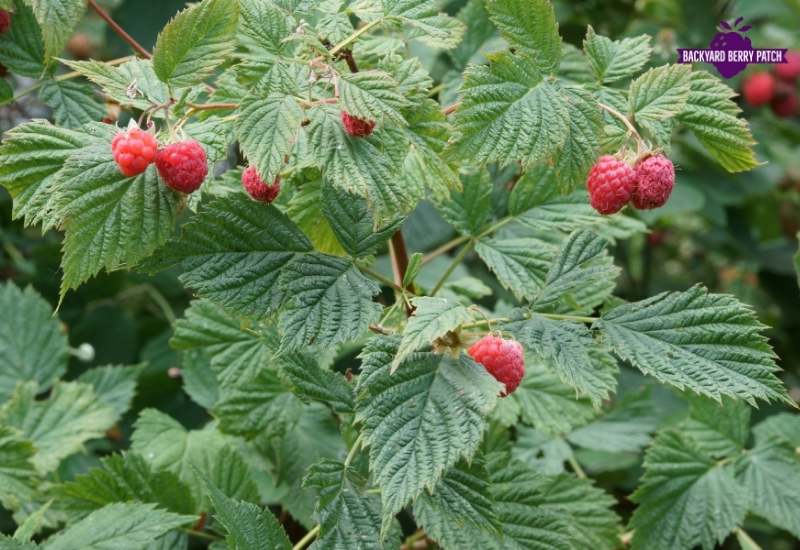Growing raspberries in Rhode Island can be a fruitful and enjoyable endeavor, especially with the diverse selection of raspberry varieties available. As a gardener in this region, I’ve discovered that not all raspberries perform equally well here. This article is going to explore the best thornless and thorny raspberry varieties that thrive in Rhode Island’s unique growing conditions.
Before we delve into specific varieties, it’s important to understand that Rhode Island falls within USDA Hardiness Zones 5 and 6. Knowing this can help us determine which raspberries to grow in each zone. Just like any other plant, raspberries have their own specific needs, and finding the right variety for our climate can make a significant difference in the success of our berry crop. So, let’s uncover the best raspberry varieties that will grow well in Rhode Island and provide us with bountiful harvests!
Best Thornless Varieties
In Rhode Island, growing thornless raspberries can make the harvesting process much more enjoyable. I’ve researched a few exceptional thornless varieties suitable for this region. Some of the best thornless raspberries to grow include Canby, Glencoe, Itsaul, Joan J, and Mammoth Red Raspberry Shortcake. These varieties offer delicious fruit with the added benefit of thornless canes for comfortable picking.
Canby is a popular thornless variety that produces large, sweet, bright red berries. This variety is not only flavorful but also disease-resistant, making it an excellent choice for Rhode Island gardens.
The Glencoe raspberry, also known as “Purple Thornless,” is a delicious and unique hybrid. Its berries have a sweet-yet-tart flavor and a deep purple color, making them a visually appealing addition to your garden.

The Itsaul variety has large, late-bearing raspberries. The fruit is incredibly sweet, and the plant is known for being hardy and reliable in various climates, making it an excellent option for Rhode Island’s ever-changing weather.
Another one of my top recommendations is the Joan J raspberry. This everbearing variety consistently produces an abundant yield of large, flavorful berries throughout the season. It thrives in full sun and can grow up to 5 feet tall.
Mammoth Red Raspberry Shortcake is a compact variety that is perfect for small-space gardening. With large, sweet fruit, this thornless variety is ideal for growing in containers and tight spaces.
Overall, these thornless raspberry varieties offer fantastic flavors, impressive yields, and the added benefit of a more comfortable harvest experience for everyone.
Best Thorny Varieties
As a passionate gardener, I have come across numerous thorny raspberry varieties suitable for growing in Rhode Island. These varieties are known for their delicious taste and abundant yields. While thorns may make harvesting a bit challenging, they provide better support to the plants and are often more productive than thornless varieties.
First on my list is the Killarney red raspberry, which is an excellent choice for Rhode Island gardens. This variety is cold hardy, disease resistant, and offers a rich, sweet flavor. Killarney red raspberries are perfect for eating fresh, canning, or turning into jams and jellies.
Another thorny variety I recommend is the Illini Hardy raspberry. This cultivar is known for its extreme cold hardiness, making it suitable for Zones 5 and warmer. Illini Hardy raspberries have a unique flavor and perform well in Rhode Island’s climate.
The Bristol raspberry is another excellent thorny variety to consider. Bristol raspberries boast large, firm, and flavorful fruit, making them a popular choice for home gardeners. With a little extra care and attention, these raspberries will thrive in Rhode Island gardens, producing bountiful harvests for years to come.
Finally, I want to mention the impressive Himbo Top raspberry. This variety produces large, firm, and flavorful berries, with a high yield potential. Himbo Top raspberries are also known for their resistance to common raspberry pests, making them a strong option for those looking to grow raspberries in Rhode Island.
Raspberries for Each Grow Zone in Rhode Island
In Rhode Island, the climate is moderate, with temperatures averaging between 18-24 degrees Celsius during the growing season, which typically lasts from May to October. As a gardener in Rhode Island, I have come across various raspberry varieties that are suitable for each grow zone in this area.
Even though the climate in Rhode Island is fairly uniform, there are still some microclimate differences across the state. In most parts of the state, the predominant hardiness zones are 6a and 6b, but you’ll find areas in 5b as well. So, it’s essential to be aware of the specific grow zone you’re in to make informed decisions when selecting raspberry plants for your garden.

For those in zone 5b, some of the best thorny raspberry varieties to grow are ‘Killarney’ and ‘Boyne’. These are both cold-hardy varieties that do well in cooler climates. On the other hand, ‘Fall Gold’ and ‘Anne’ are excellent thornless yellow-fruited options, which brighten up the garden and provide delicious fruit. You can find ‘Killarney’ plants available from Gardener’s Path.
In zones 6a and 6b, you can try cultivars like ‘Canby’, ‘Heritage’, and ‘Tulameen’. These thorny varieties produce large, bright red berries and are known for their excellent flavor. For thornless selections, ‘Joan J’, ‘Nova’, and ‘Triple Crown’ can be great options. They are high yielding, disease-resistant, and bear large, flavorful fruits.
Before planting raspberries in your Rhode Island garden, make sure you select varieties that are well-suited to your specific grow zone. This will help ensure a bountiful harvest and improve your overall gardening experience. Remember, raspberries require a minimum of 60 days of frost-free weather to ripen, so the best time to plant them is in late April or early May, as mentioned by Growing Guides.

Leave a Reply